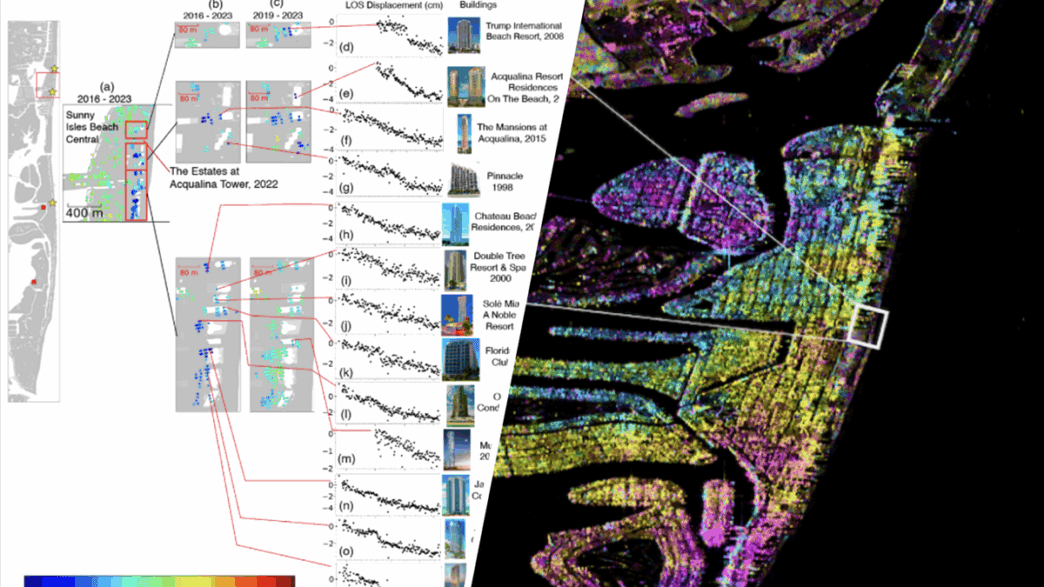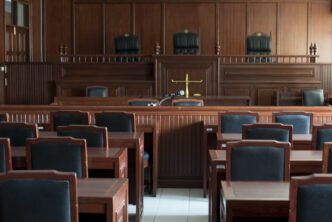A recent study from the University of Miami has revealed that nearly 35 buildings along the coastline from Miami Beach to Sunny Isles Beach are experiencing subsidence, a process where the ground sinks or settles.
Substantial attention has been drawn to a new study conducted by scientists at the University of Miami’s Rosenstiel School of Marine, Atmospheric, and Earth Science, which found that 35 oceanfront buildings are showing signs of sinking. The rate of subsidence varies from two to eight centimeters, raising concerns among local residents and officials.
The buildings located in Sunny Isles Beach show the most significant subsidence effects, with Surfside following closely. Surfside is particularly notable, as it was the site of the 2021 Champlain Towers South condominium collapse that resulted in nearly 100 fatalities. The study, published in the journal Earth and Space Science, also identified sinking in two Miami Beach buildings and one in Bal Harbour.
Researchers employed satellite radar technology to measure subsidence between 2016 and 2023. This technology allowed the researchers to detect millimeter-scale displacements by analyzing fixed elements on buildings, such as balconies, rooftop air conditioners, and boardwalks. Their findings revealed that newly-built structures might settle several centimeters during and after construction, and this settling can continue for years.
Surprisingly, no displacement signals were detected prior to the Surfside collapse, indicating settlement may not have been a contributing factor in that tragic event. This discovery challenges previous assumptions about the role of seismic activity and construction vibrations in building stability.
Lead author Farzaneh Aziz Zanjani remarked on the unexpected extent of subsidence hotspots along South Florida’s coastline, stressing the importance of ongoing monitoring and further study to fully understand the long-term risks to these structures. According to the researchers, potential causes of this subsidence include the compression of sandy layers under the weight of the buildings, vibrations from construction, daily tidal flows, and the natural erosion of South Florida’s subsurface limestone.
This study highlights the potential geological vulnerabilities facing South Florida’s coastal buildings. As urban development continues, understanding these subsidence patterns is vital for ensuring the structural integrity of these properties.
Source: Nbcmiami








